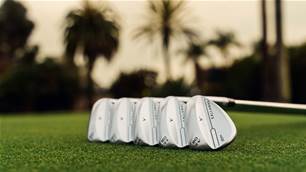Do performance road wheels need to be carbon fibre? The DT Swiss PR 1400 DICUT OXIC suggest that no - they don't have to be.

Looking closely at the wheel, the hubs use DT 240 internals with their acclaimed Star-Ratchet. These are low maintenance with low resistance and good pick up when pedalling. You can replace the internals for faster pick up too - which is handy for criterium racing or cyclocross where you have a lot of accelerations.
The spokjes are straight pull and aero, adding marginal aero gains but greater strength and fatigue resistance (along with lower weight) compared to a normal spoke.
The rims have the OXIC surface - basically an updated take on ceramic coatings from past years. It dramatically improves braking - especially in the wet. It also strengthens the rim and adds wear life the the braking surface. You do need specific pads - but DT Swiss suppply them with the wheels.
Considering the best solution to good braking performance with carbon rims is changing to a bike with disc brakes - the OXIC surface is ideal for anyone riding in all conditions, or doing a lot of distance (and braking) in gritty conditions. Or anyone wanting braking reliability - and who deosn't want that?

The alloy wheels sit just 21mm high, with a 21.5mm outer width and 18.5mm internal width. This is a little shallow and narrower than something like the H PLus Son Archetype rims which are a popular choice for custom wheel builds.
Tubeless road tyres - really?
While tubeless tyres have really taken off in the mountain bike world, adoption for road cycling has been a little lower. But as these wheels are designed as a tubeless set it was a perfect time to test the system out - and Bikecorp supplied some Padrone TR tubeless road tyres to test at the same time. You could win some of these, or the Dolomites, by subscribing to Bike Magazine.

The rims are taped for tubeless setup, and the kit comes with the valves, and injector and instructions. Similarly, the tyres have their own instructions - and some tyre levers.
The process is about what you would expect, fit the bead into the rim bed, put a valve in, work the other bead around, and used the smooth edged tyre levers if you really have to to get the bead seated.
The next part is a little different, as the injector is used to fill the tyre with some sealant. It has a needle that pushes through the valves - which are otherwise sealed over the top - once you remove the valve core.

This is all quite straight-fprward. One wheel went up easily, the other was a bit harder, requiring a little more soapy water on the bead (as suggested by Maxxis) to make it slip into place under inflation.
But once up - they held really well.
We used 23mm Maxxis Padrone TR tyres, and rthey come in 25mm as well. But the 23mm make a very round, consistent profile when inflated. At a glance - they look like a tubular glued on to the rim.
Riding the wheels, it's clear they're built with a high spoke tension as laterally they were a lot stiffer than my standard 20/24 hole H Plus Son Archetype on Bitex hubs wheels. Plus they were lighter, faster rolling and had better braking.
These wheels look like they will be great in na variety of conditions, from wind, to rain, to mountain climbs, to long descents. Which makes me think, if you're not racing the clock on any of those, maybe these are what you should be looking at?
With a couple of quick sessions on them so far, the wheels have impressed me. There's a lot more riding and testing to go with the rims and tyres - but you can see the results in Issue #22.
Related Articles

New Release: Callaway announces new Opus SP Wedges

Winner’s Bag: Scottie Scheffler – The Open Championship













